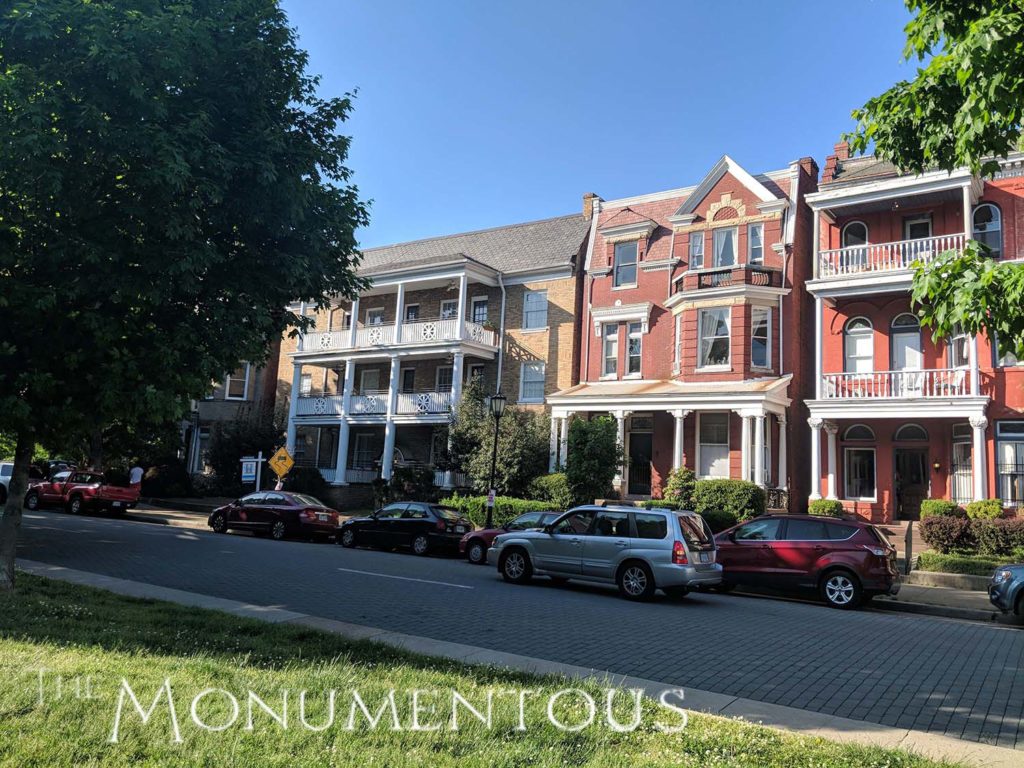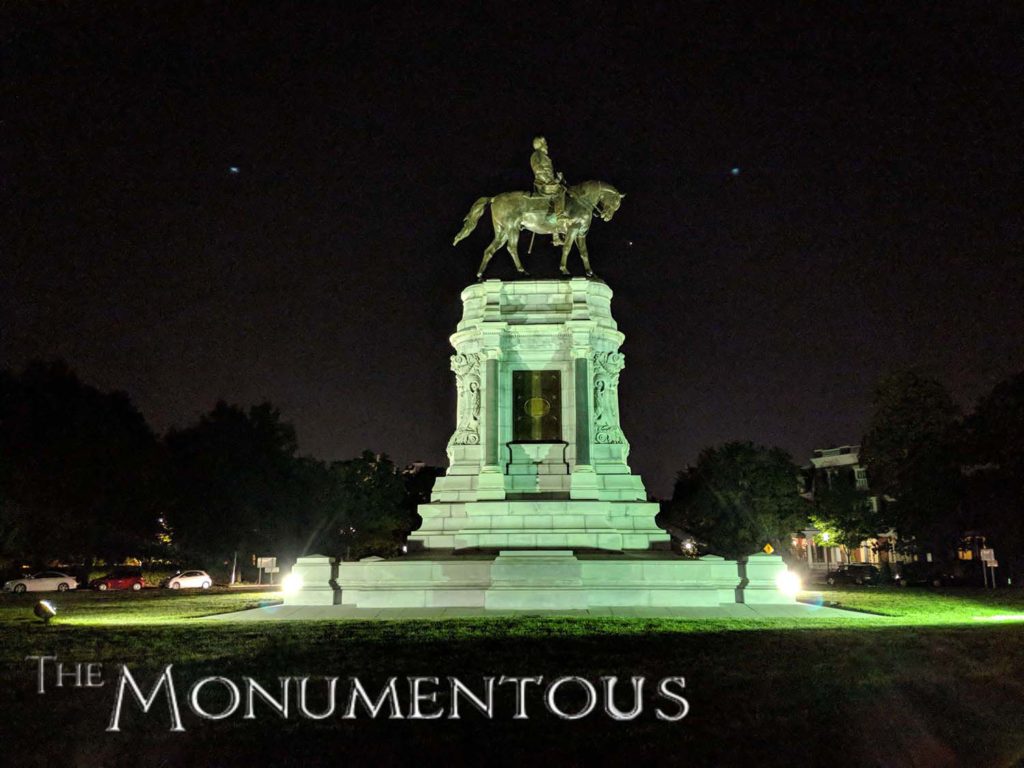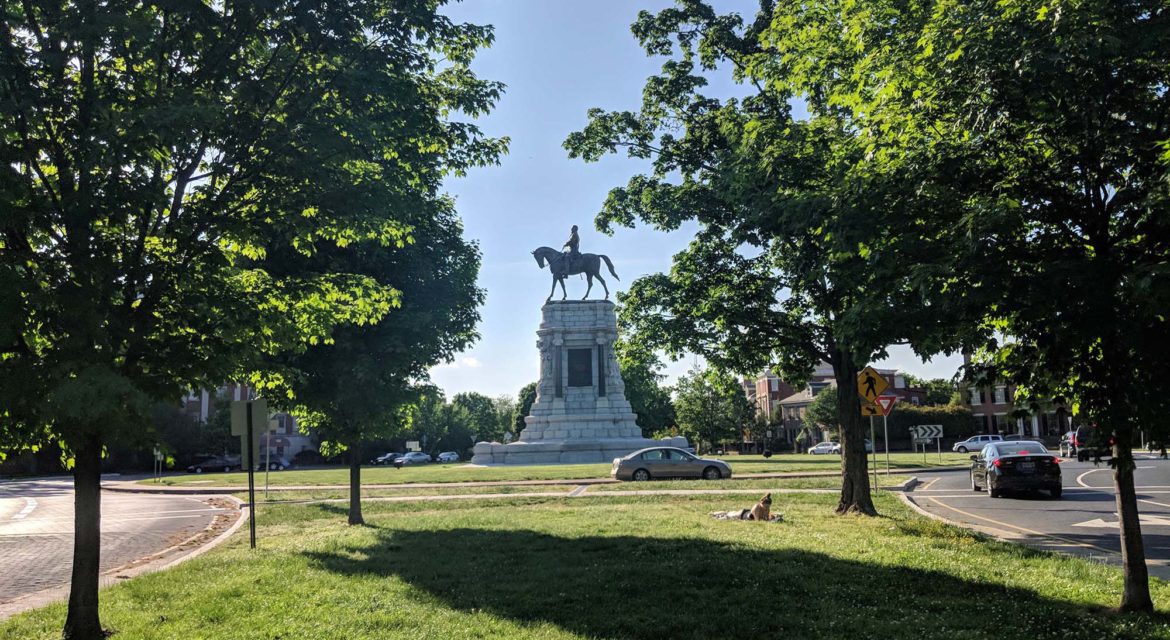 Monuments are sometimes built to commemorate a person or event, and the monuments on Monument Avenue in Richmond, Virginia, were constructed to do both. Statues dedicated to Confederacy leaders such as Robert E. Lee, Jefferson Davis and Stonewall Jackson began to appear as early as 1890 and represented people and concepts that residents wanted to honor. That the Avenue itself is Americas’ only grand residential boulevard with monuments of this size that survives virtually unaltered to the present is a testament to how many people have had that feeling through the years.
Monuments are sometimes built to commemorate a person or event, and the monuments on Monument Avenue in Richmond, Virginia, were constructed to do both. Statues dedicated to Confederacy leaders such as Robert E. Lee, Jefferson Davis and Stonewall Jackson began to appear as early as 1890 and represented people and concepts that residents wanted to honor. That the Avenue itself is Americas’ only grand residential boulevard with monuments of this size that survives virtually unaltered to the present is a testament to how many people have had that feeling through the years.
However, the fact that Confederate leaders are being revered in this way has caused many to question and reinterpret exactly what and who these statues represent. Many now see them as symbols of oppression that have no place in a majority African American city. The Confederate statues on Monument Avenue have been the focus of how Richmond has defined itself and its values, and it continues to define that value.

The Capital of the Confederacy
As the capital of the Confederacy in the American Civil War, Richmond was the seat of political power for the South. Ultimately, the city was captured in 1865, and fires set during the evacuation destroyed a large portion of Richmond. In the aftermath of the war and over the course of the following century, numerous monuments, memorials, and museums to preserve and commemorate the history of the city were established.
The first monument on Monument Avenue is the statue of Robert E. Lee, which was erected in 1890 when over 100,000 people came out to witness the event. With a 12-ton, 21’ high bronze statue sitting on a 40’ high granite pedestal, it is bigger than all of the subsequent monuments that were erected. The equestrian sculpture of J.E.B. Stuart as well as the monument dedicated to Jefferson Davis were unveiled in 1907. An equestrian sculpture of Stonewall Jackson was dedicated in 1919, while the piece depicting Matthew Fontaine Maury was unveiled in 1929.
As the years went on, Monument Avenue became the site of an impressive series of architecturally dignified town houses and apartment buildings. The various housing types along the Avenue demonstrate the vitality of urban living and a diversity of taste and means. Over the years, different plans to expand the capacity of Monument Avenue as a historical destination were put forth, but organizations like the Monument Avenue Preservation Society were formed to preserve the historic elements of the homes, buildings and public spaces along the Avenue.
 In the early 1990s, the Richmond City Council proposed that a statue of Richmond native and tennis great Arthur Ashe be installed on Monument Avenue. It was a controversial proposal since many people argued it didn’t fit with the rest of the monuments on Monument Avenue. Despite that, a statue depicting Ashe was unveiled in 1996.
In the early 1990s, the Richmond City Council proposed that a statue of Richmond native and tennis great Arthur Ashe be installed on Monument Avenue. It was a controversial proposal since many people argued it didn’t fit with the rest of the monuments on Monument Avenue. Despite that, a statue depicting Ashe was unveiled in 1996.
That pushback was indicative of the objections that many have raised about the monuments on Monument Avenue, much of which stems from the emotional realities these statues represent. Some have argued for the outright removal of these statues, while others are asking for info that will add context to these statues that honor Confederate leaders. Others are asking to see additional statues, perhaps dedicated to people in the United States Colored Troops, which represent another side of history.
These discussions about the people and topics represented on Monument Avenue are more important than ever since they form such a core part of the experience on the street itself.

Monumentous Sculpture and Influence in Less than 2 Miles
The distance from the J.E.B. Stuart monument to the Arthur Ashe monument is less than two miles, which makes it possible to see all five of the statues on Monument Avenue in less than an hour. It’s a reality that underscores what a significant experience it is to visit one of these monuments, much less all five of them.
Gates used to surround many of the monuments, but cars frequently collided with the gates, leading to their removal. Today, visitors can walk right up to most of the monuments to see and appreciate the exquisite detail that many of them display. While the equestrian statues of J.E.B. Stuart and Stonewall Jackson are similar, the details of each set them apart. Meanwhile, the Arthur Ashe monument is distinct and different from the rest of the monuments in every conceivable way.
 The serene settings and grass in the middle of the Avenue along with the closely spaced town houses with five feet or less between buildings add to the experience of Monument Avenue. A significant number of freestanding Colonial Revival mansions date from the 1920s. The Colonial Revival style is a popular one on Monument Avenue, but Spanish Colonial, Tudor Revival, French Renaissance, and Italian Renaissance styles are also present. A number of churches in different architectural styles also dominate sections of Monument Avenue, all of which contribute to a feeling of being in a small neighborhood.
The serene settings and grass in the middle of the Avenue along with the closely spaced town houses with five feet or less between buildings add to the experience of Monument Avenue. A significant number of freestanding Colonial Revival mansions date from the 1920s. The Colonial Revival style is a popular one on Monument Avenue, but Spanish Colonial, Tudor Revival, French Renaissance, and Italian Renaissance styles are also present. A number of churches in different architectural styles also dominate sections of Monument Avenue, all of which contribute to a feeling of being in a small neighborhood.
 Some of the monuments are lit at night, creating a distinct experience for visitors in terms of how they can appreciate the monuments. Similar to the experiences enabled at other monuments that are lit up at night, visitors can appreciate these monuments in a totally different way at night, although there are limitations around what else can be done at and around the monuments after dark.
Some of the monuments are lit at night, creating a distinct experience for visitors in terms of how they can appreciate the monuments. Similar to the experiences enabled at other monuments that are lit up at night, visitors can appreciate these monuments in a totally different way at night, although there are limitations around what else can be done at and around the monuments after dark.
All of these experiences have directly influenced how people in the present interpret and appreciate Monument Avenue, and how that influence reflects on and impacts the city of Richmond itself.

Impacting the People and Culture in the Present and Future
Richmond’s tourism officials used to showcase Monument Avenue as a destination for the city itself, and it is still featured as one of the top “things to do” in Richmond”. In 2007, the American Planning Association named Monument Avenue one of the 10 Great Streets in the country because of the historic architecture, urban form, public art and integration of multiple modes of transportation featured on the street.
 Monument Avenue has also been a central focus for events in the city. Originally started in 2000, Ukrop’s Monument Avenue 10k has had over 25,000 participants and become one of the most popular 10K races in the United States. It is also the site of Easter on Parade, another spring tradition during which many Richmonders stroll the Avenue wearing Easter bonnets and other finery.
Monument Avenue has also been a central focus for events in the city. Originally started in 2000, Ukrop’s Monument Avenue 10k has had over 25,000 participants and become one of the most popular 10K races in the United States. It is also the site of Easter on Parade, another spring tradition during which many Richmonders stroll the Avenue wearing Easter bonnets and other finery.
Monument Avenue has become a place of pride for many in the region, as visitors range from people taking wedding photos to class trips. These are just a few examples of how many have come to see Monument Avenue as more than a collection of Confederate statues, but others are approaching that concept from a very different direction. Efforts are underway to get the city as a whole to recognize the inherent issues that these monuments represent.
The Monument Avenue Commission’s task is “to solicit public input and make recommendations to the Mayor’s Office on how to best tell the real story of these Monuments.” People on both sides of the issues are exploring the ways the statues on Monument Avenue contributed to larger discussions about defeat, politics, race, and tourism. For some, that dialogue isn’t enough, as recent marches have called for the removal of Confederate monuments in recognition of how these statues directly and indirectly support the morale and motivations of the South during the Civil War.
These developments are indicative of the way in which monuments can impact the people and culture in the present and future, and speaks to power associated with creating a legacy.

The Responsibility of Legacy
 Monument Avenue has created and enabled a complicated legacy, due to the different interpretations that the monuments have elicited over the decades. As an example of that, the Jefferson Davis Monument is now tagged with graffiti almost as regularly as it had been marked by birthday wreaths a century before.
Monument Avenue has created and enabled a complicated legacy, due to the different interpretations that the monuments have elicited over the decades. As an example of that, the Jefferson Davis Monument is now tagged with graffiti almost as regularly as it had been marked by birthday wreaths a century before.
In many ways though, Monument Avenue represents what it can mean to create monuments that resonate with a community and culture in such deep ways. It also represents the responsibility that comes with that influence, as recent events have caused many people to reconsider the legacy Monument Avenue represents. That development reinforces the monumentous impact that pieces like these can represent for individuals and entire regions across the ages.

